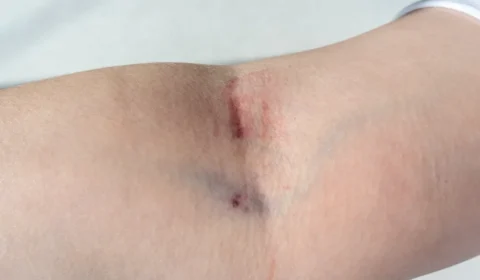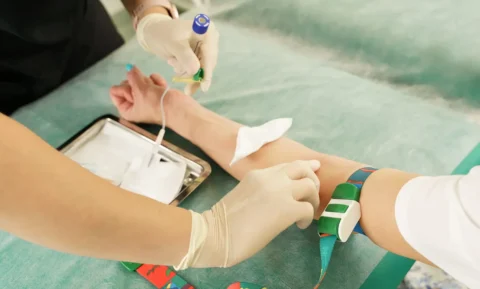Dermal fillers are one of the most in-demand procedures in any med spa and aesthetic clinic today. Traditionally, cosmetic fillers are given using sharp-tip needles but this method carries a higher risk of pain and bruising after the procedure. If you want to provide a less painful dermal filler experience to your clients, you should learn how to use the blunt-tip cannula technique for injections.
So what do you need to know about microcannula injections? Using a blunt-tip microcannula is a safer and more flexible alternative for administering dermal filler treatments. To perform successful filler procedures, you need to know how to choose the appropriate size for the intended treatment area, examine the blunt tip, and practice the best injection technique.
Enhance Your Injection Technique With Aesthetic Microcannula Training
For many decades, using a needle has been the accepted way of administering medical or cosmetic injections, including dermal fillers. However, along with the increasing popularity of injectable procedures, many aesthetic doctors have discovered a new method to provide a safer and more comfortable filler experience with the use of microcannula.
A microcannula is an injection tool that’s designed with a blunt end to minimize the possible discomfort, side effects, and subdermal trauma during the cosmetic procedure. Since there are still some individuals who are fearful of sharp needles, using a microcannula can help them get their desired facial filler without experiencing too much pain.
Why Use Microcannulas for Dermal Filler Procedures
Microcannulas are truly a game-changer in the medical spa industry, especially in the treatment of cosmetic injectable fillers. While there are still practitioners who use a needle for injections, there’s no doubt that microcannulas are on the rise. It offers several advantages that will make you consider switching to the cannula technique. Here are some of the benefits of using microcannulas:
1) Allows you to easily maneuver the injection for precise application
To get the best facial filler result, the soft gel material should be placed smoothly underneath the skin. The microcannula technique lets you have better control during the injection procedure so it can efficiently reach the desired treatment sites with lesser pain.
Microcannulas have long, flexible blunt tips that cannot break the skin but can penetrate the subcutaneous layers deep enough to place the fillers. With this technique, you can safely administer the filers while avoiding hitting any blood vessel and tissue. This method can also help distribute the fillers more evenly in the area compared to using a needle.
2) There’s a low risk of serious complications after injections
While dermal fillers are a safe procedure, there are still some risks that come with the treatment. Post-injection pain, bruising, and swelling are common side effects that can occur after administering the procedure with a hypodermic needle. However, since using a microcannula lessens tissue and blood vessel damage during treatment, it also means a patient can experience fewer side effects and faster downtime after the injections.
3) Fewer entry points for the injections
When using a microcannula, you only need to create one to two entry points compared to many injections with a hypodermic needle. Since the cannula doesn’t have a sharp tip, you’ll use a needle to open up a small path where the microcannula will be inserted. With its flexibility, you can easily guide the cannula to reach the sites that need the filler.
Common Injection Areas for Microcannulas
Another advantage of the microcannula technique is that it’s versatile and can be used for a wide variety of dermal filler injections. It’s also compatible with the popular types of facial fillers such as Juvederm, Restylane, Radiesse, and Sculptra Aesthetic. Here are some of the common areas where you can use a microcannula:
- Cheeks and midface region – For restoring volume and improving cheekbone structure
- Temples – For rejuvenating temporal hollows and providing a mini forehead lift
- Jowls – For reducing sagging skin under the chin and neck
- Tear trough and under eye hollows – For minimizing dark circles and improving the junction between the lower eyelid and cheeks
- Nasolabial folds – For smoothing out wrinkles that run from the corners of the nose to the mouth
- Marionette lines – For eliminating creases and lines that are visible from the sides of the mouth to the chin
- Lower face area – For contouring jawline and rejuvenating overall facial profile
What To Expect From A Microcannula Training Course
To ensure that your practice can administer safe microcannula procedures, you should equip your medical professional staff with the right knowledge and skills in injections. Anyone with a medical license such as a physician assistant and registered nurse practitioner can enroll in a facial aesthetics course in microcannulas. Some of the common topics covered in a microcannula training program are:
- Understanding the facial anatomy for successful dermal filler application
- History and background of microcannulas in medical aesthetics
- Safety protocols and reminders for the use of microcannulas
- Different kinds and sizes of microcannulas
- Practice and hands on training on different microcannula injection techniques
- Patient assessment to determine possible injection sites
- How to reduce and manage potential side effects
Tips On Using A Microcannula For Dermal Filler Injections
The use of microcannula still depends on the preference of the injector and plastic surgeon. However, once you decide to implement this technique in your practice, you’ll find that it’s relatively easy to learn and master microcannulas for effective dermal filler treatments. Here are some reminders to help you in choosing the best microcannula for the procedure:
1) Select the appropriate microcannula size for the specific treatment area
There are different sizes and types of microcannulas that can be used depending on the intended injection sites. You can use 25G to 27G microcannulas for most treatment areas in the face including the jowls, chin, cheeks, tear trough, glabella, forehead, and neck.
2) Examine the flexibility of the tip
When performing dermal filler treatments, you should use longer microcannulas since they offer more flexibility to precisely administer the material while minimizing pain and tissue damage. You should also check the sharpness of the tip, and choose the one which is blunter for a lesser risk of bleeding and bruising.
3) Use a slightly larger needle for the entry site
To allow the microcannula to fit accurately on the skin, you should create a point using a larger hypodermic needle. This process may be slightly painful for the patient but once there’s an entry point, you can comfortably position the microcannula and deliver the fillers without any more piercing to the skin.
Shop for Microcannulas and Aesthetic Training Courses at FACE Med Store
With the microcannula technique, you can perform dermal filler treatments more efficiently, safely, and comfortably for your patients. The first step in incorporating this injection method into your practice is to get proper training for your aesthetic staff and injectors.
At FACE Med Store, we provide courses on facial aesthetic medicine, advanced Botox injections, dermal fillers, and body contouring. We also offer a wide variety of high-quality microcannulas at different sizes and lengths. Call us today to inquire more about our products and stocks and know how we can help your aesthetic or medical practice.






